Order: Anseriformes
Family: Anatidae
Genus: Branta
Species: Branta hutchinsii
Introduction

US Fish & Wildlife Service
The Cackling Goose, Branta hutchinsii, is a medium to large bird. Once thought to be a small subspecies of Canada Geese, in 2004 DNA sequencing resulted in them being considered their own species (Banks et al., 2004). Currently, there are four subspecies of Cackling Geese. This includes Aleutian Geese, Taverner’s Goose, Cackling Geese, and Richardson’s Geese. The Aleutian Geese was once considered an endangered species, but in recent years conservation helped to stabilize the population.
Often confused for the Canada Goose, the Cackling Goose is a smaller species with many similarities. One of the major differences between the two is the size comparison. The Cackling Goose is quite a bit smaller, often the largest is the same size of the smallest Canada Goose. The Cackling Goose has a weight range between 2-6 pounds, with an average of 4 pounds. Males tend to be slightly larger than females.
They have a black head and neck, with a white chin strap that follows upwards to behind the eyes. This is a distinguishing feature of a white cheeked goose. The dorsal side of the body is a grey-brown coloration with the feathers tipped in a lighter off white-brown color. The chest and belly is a off white with grey-brown ‘banding’. The undertail coverts are bright white. They have dark black bills, and dark black-brown eyes. Each individual can be slightly different in contrast and coloration.
They are medium to long distant migrants, which have minor stopping points. Originally thought to only have breeding grounds in the most northern part of Canada, it has now been noticed that individuals will nest throughout all of Canada and the 48 continental states of the United States (Rusch, Malecki, & Trost, 1995). Although they can be seen nesting in many places, the majority if individuals still migrate and nest in Northern Canada.
Since Cackling Geese often have their breeding areas in the northern arctic regions of Canada, they are not far from Canada Geese, which breed in the sub-arctic areas of Canada. The two species’ breeding grounds overlap, which creates a very small area that hybridization can occur. The geographic location of this area is approximate to 59°N and 60°N (Leafloor, Moore, & Scribner).
There are three times migration occurs. This includes fall migration, spring migration, and molt migration. Fall migration starts in the late stages of August, with returning dates in late September and early October. Spring migration starts around the middle to end of April, and ends around the middle of May. Molt migration usually consist of non breeding geese within their first 1-2 years, but will include individuals who did not mate. They will make their way to the north areas where more fatty foods, such as berries, are available.
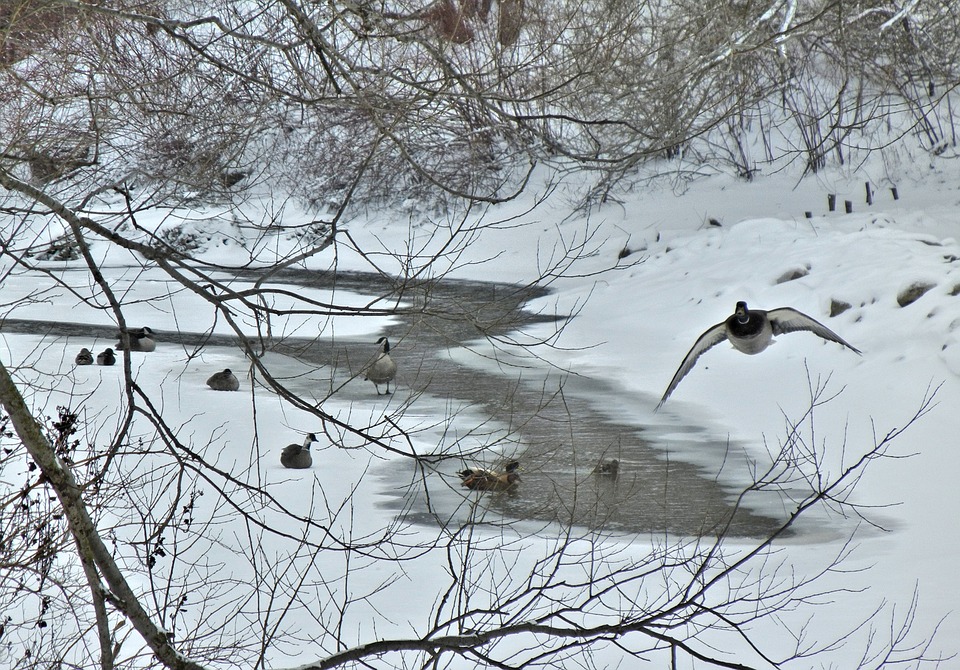 When not in the arctic breeding grounds, Cackling Geese can often be found in wetlands, marshes, lakes, rivers, and grasslands. They often sunbathe, so they can be noticed in open grass fields. During breeding and migration times, they can be seen in snow and ice covered grasslands and marshes, or on the ocean’s coastal regions. The tend to stay near bodies of water and foraging options.
When not in the arctic breeding grounds, Cackling Geese can often be found in wetlands, marshes, lakes, rivers, and grasslands. They often sunbathe, so they can be noticed in open grass fields. During breeding and migration times, they can be seen in snow and ice covered grasslands and marshes, or on the ocean’s coastal regions. The tend to stay near bodies of water and foraging options.
During times of brooding and raising young, Cackling Geese have a preference of Arrowgrass (Sedinger & Raveling, 1984). Arrowgrass is sought after because of the high protein content, as well as the substantial energy. During pre-migration and migration, they will often feed on available Crowberries and other available berries (Hupp, Safine, & Nielson, 2012). Berries are sought after during these crucial times because of the high fat and energy content.
Times where migration and brooding is not occurring, many geese will feed on other available grasses and agricultural grains. In large agricultural fields created by farmers, Cackling Geese can be considered a nuisance. Cackling Geese can eat multiple sources of seeds while foraging, which sometimes results in the seeds being dispersed by feces onto agricultural land (Ayers, DePerno, & Moorman, 2010). In some cases the seeds will grow, causing unwanted weeds and grass. This can negatively impact their crops, live stock, and time.
Cackling Goose Call- Partial Spectrogram & Recording by Gelane Clements
Cackling Goose Call-Spectrogram & Recording by Patrik Åberg
Cackling Goose Flight Call- Spectrogram & Recording by Paul Marvin
Unfortunately, with the recent split that Cackling Geese have undergone, not much is known from their behavior apart from what was studied when they were still considered Canada Geese.
Cackling Geese are migratory birds, which results in long distance flying to breeding grounds. They will often fly in large clusters if flying small distances, such as from pond to pond. But, when in migratory flight individuals make a “V” shape pattern. This allows for better communication as well as better aerodynamics (Badgerow, 1988).
They are known to not only be strong migratory flyers, but strong swimmers as well. Individuals can dive and swim underwater, with newly hatched young being able to do so only after a few hours.
 Like many geese, the Cackling Goose form monogamous pairs. Majority of these pairs will stay together until the death of one, in which the other individual may seek out another mate (Hanson, 1953). These pairs will raise and protect their nest together for the best chance at nest survival (Jarvis & Bromley, 2000).
Like many geese, the Cackling Goose form monogamous pairs. Majority of these pairs will stay together until the death of one, in which the other individual may seek out another mate (Hanson, 1953). These pairs will raise and protect their nest together for the best chance at nest survival (Jarvis & Bromley, 2000).
Cackling Goose within a group of Canada Geese (video on youtube by Cornell Lab of Ornithology)
February 23, 2019
Billy Frank Jr Nisqually National Wildlife Refuge, Olympia, Washington
Time: 7:57 Precipitation: .08 inches past 24 hours Wind speed: 6 mph SSW
Latitude: 47.075703 Longitude: -122.713008
Three individuals casually walking next to the gravel path of Nisqually. They would pause every so often to graze on the grass for a few seconds. After about 7 minutes of this they stopped at one location, one individual layer down while the other two grazed.
February 18, 2019
Capitol Lake Olympia, Washington
Time: 7:08 Precipitation: 0 inches past 24 hours Wind Speed: 4 mph SW
Latitude: 47.037955 Longitude: -122.907939
They were located on the banks of the water with medium height grass in the surrounding areas. Three individuals were visible, possibly more in the grasses behind them. They seemed to be grazing. Unfortunately to the distance of the Geese, I was unable to see small details of behavior.
May 03, 2019
Billy Frank Jr Nisqually National Wildlife Refuge-Twin Barns area, Olympia, Washington
Time:15:05 Precipitation: 0 inches past 24 hours Wind Speed: 11 mph NE
Latitude: 47.077872 Longitude: -122.712366
While walking back to the entrance of Nisqually I heard several geese calls. While getting closer to the Twin Barns area I notices a large flock of roughly 200 individuals. They were grazing and calling. Over the next 10 minutes more individuals joined them. These new individuals would come in flocks ranging from 3-40 individuals. While watching the grazing behavior I noticed that they slowly moves in a large circling pattern.
Adubon Christmas Bird Count. (2018). Retrieved from http://netapp.audubon.org/CBCObservation/CurrentYear/ResultsBySpecies.aspx
Aleutian Cackling Geese – Humboldt Bay – U.S. Fish and Wildlife Service. (2018, March 25). Retrieved March 10, 2019, from https://www.fws.gov/refuge/Humboldt_Bay/wildlife_and_habitat/AleutianCacklingGeese.html
Ayers, C. R., Deperno, C. S., Moorman, C. E., & Yelverton, F. H. (2010). Canada Goose Weed Dispersal and Nutrient Loading in Turfgrass Systems. Ats, 7(1), 1-6. doi:10.1094/ats-2010-0212-02-rs
Banks, R. C., C. Cicero, J. L. Dunn, A. W. Kratter, P. C. Rasmussen, J. V. Remsen, J. D. Rising, D. F. Stotz. 2004. Forty-fifth supplement to the American Ornithologists’ Union Check-list of North American Birds. Auk 121:985-995.
Badgerow, J. P. (1988). An analysis of function in the formation flight of Canada Geese. Auk 105:749-755.
https://birdsna.org/Species-Account/bna/species/cacgoo1/behavior#social
D. G. (2017, March 30). Learn to Tell a Cackling Goose From a Canada Goose. Retrieved March 4, 2019, from https://www.audubon.org/news/learn-tell-cackling-goose-canada-goose
Gates, R. J., Caithamer, D. F., Mortiz, W. E., & Tacha, T. C. (2001). Bioenergetics and nutrition of Mississippi Valley Population Canada Geese during winter and migration. Wilflife Monographs,146, 1-67.
Hanson, H. C. (1953). Inter-Family Dominance in Canada Geese. The Auk, 70(1), 11-16. doi:10.2307/4081052
Hupp, J. W., Safine, D. E., & Nielson, R. M. (2013). Response of cackling geese (Branta hutchinsii taverneri) to spatial and temporal variation in the production of crowberries on the Alaska Peninsula. Polar Biology, 36(9), 1243-1255. doi:10.1007/s00300-013-1343-3
Jarvis, R. L., & Bromley, R. G. (2000). Incubation behaviour of Richardson’s Canada Geese on Victoria Island, Nunavut, Canada. Occasional Paper of the Canadian Wildlife Services.
Leafloor, J. O., Moore, J. A., & Scribner, K. T. (2013). A hybrid zone between Canada Geese (Branta canadensis) and Cackling Geese (B. hutchinsii). The Auk, 130(3), 487-500. doi:10.1525/auk.2013.12196
Mini, A. E., & Black, J. M. (2009). Expensive Traditions: Energy Expenditure of Aleutian Geese in Traditional and Recently Colonized Habitats. Journal of Wildlife Management, 73(3), 385-391. doi:10.2193/2007-174
Mlodinow, S. G., Springer, P. F., Deuel, B., Semo, L. S., Leikering, T., Schonewald, D. T., . . . Barry, J. H. (2006). Distribution and Identification of Cackling Goose (Branta hutchinsii) Cackling Goose (Branta hutchinsii) Subspecies. North American Birds, 62(3), 344-360. Retrieved March 3, 2019.
Raveling, D. G. (1988). Mate retention of Giant Canada Geese. Can. J. Zool. 66:2766-2768.
Rusch, D. H., Malecki, R. E., & Trost, R. E. (1995). Canada geese in North America. Retrieved March 11, 2019, from https://pubs.er.usgs.gov/publication/70148456
Sedinger, J. S., & Raveling, D. G. (1984). Dietary selectivity in Relation to Availability and Quality of Food for Goslings of Cackling Geese. Division of Wildlife and Fisheries Biology, 101, 295-306. Retrieved March 4, 2019.
Sibley, D., Jourdan, J., Fairchild, D., & Lyon, D. (2010, September 26). Bill size, not shape, distinguishes Cackling and Canada Goose. Retrieved March 2, 2019, from https://www.sibleyguides.com/2010/09/bill-size-not-shape-distinguishes-cackling-and-canada-goose/

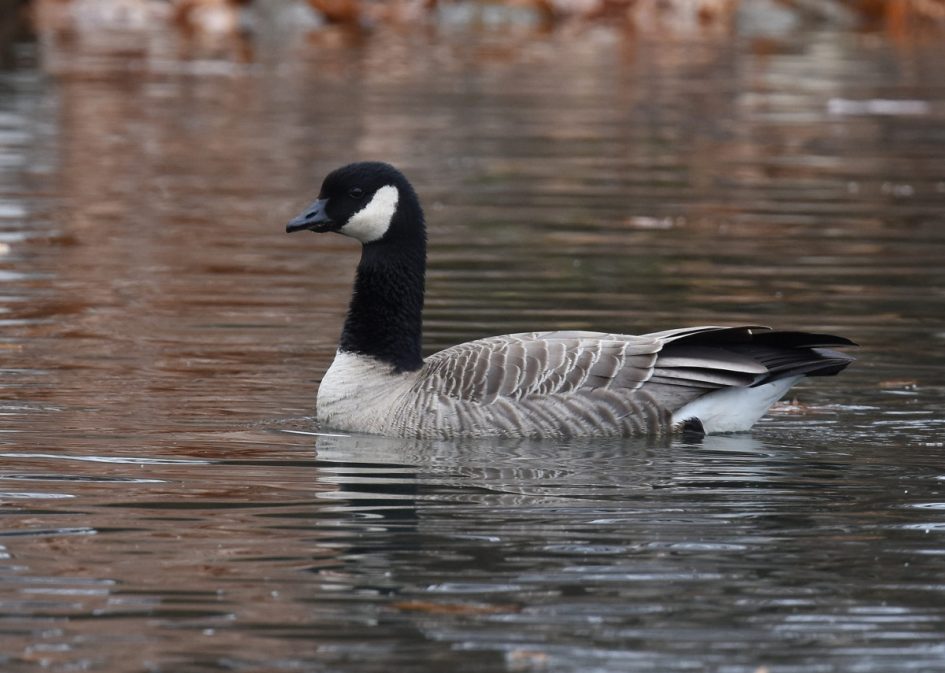
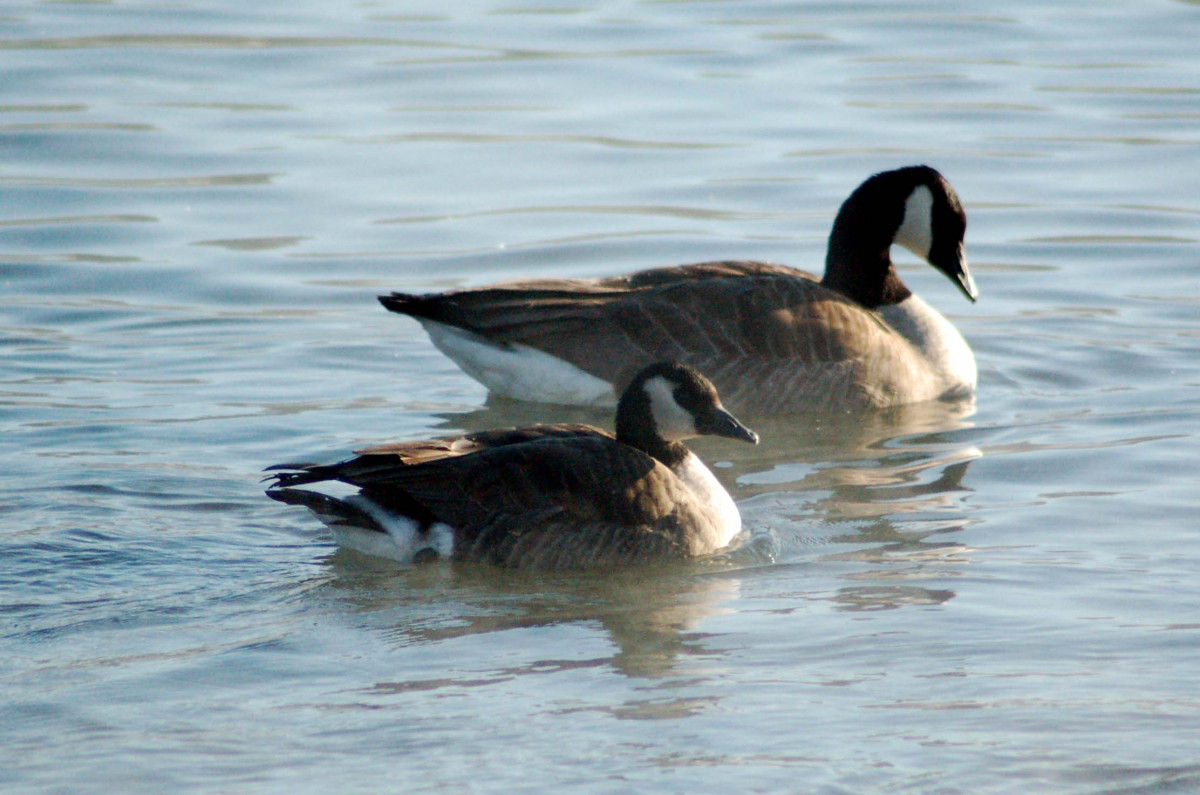

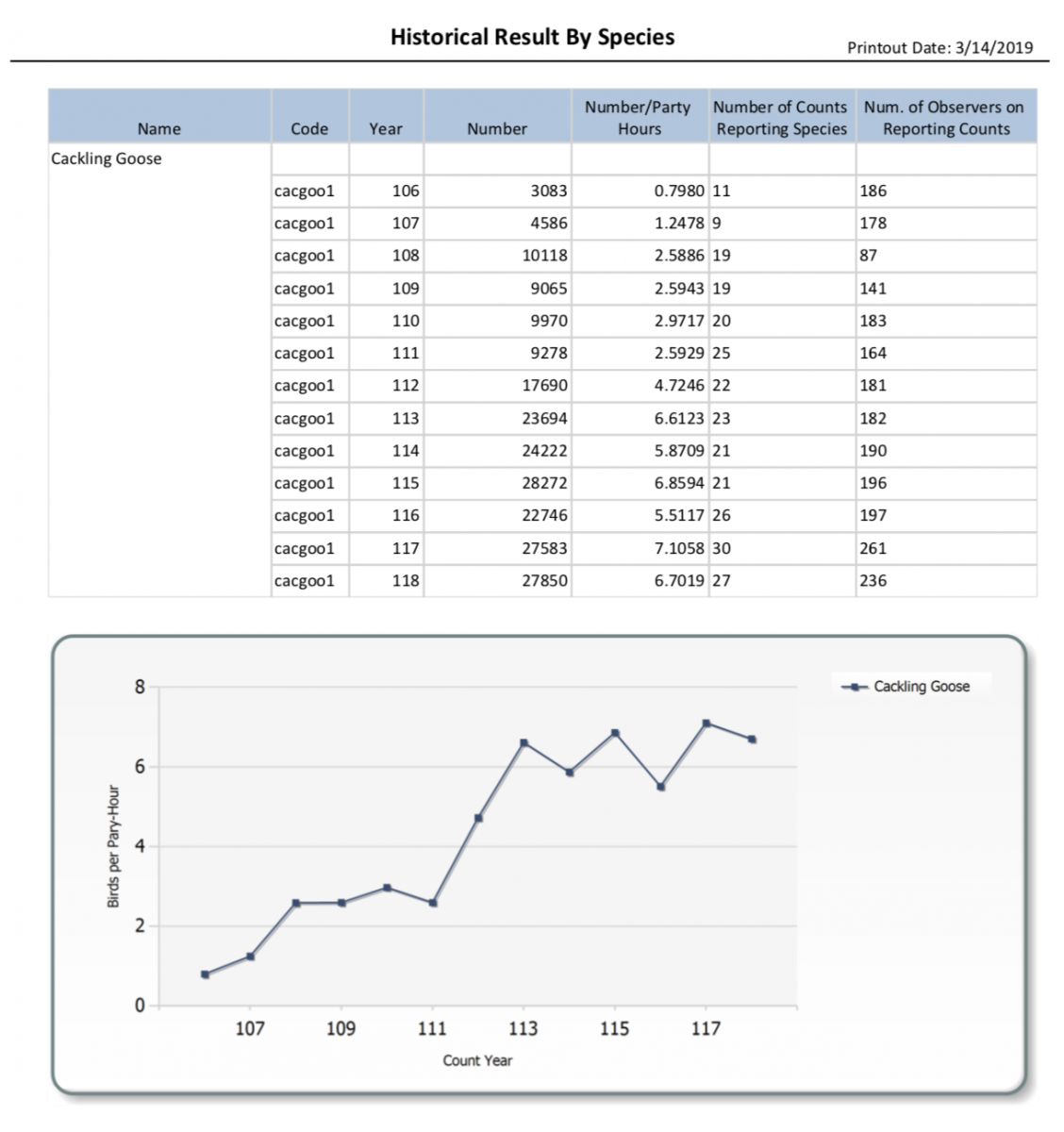
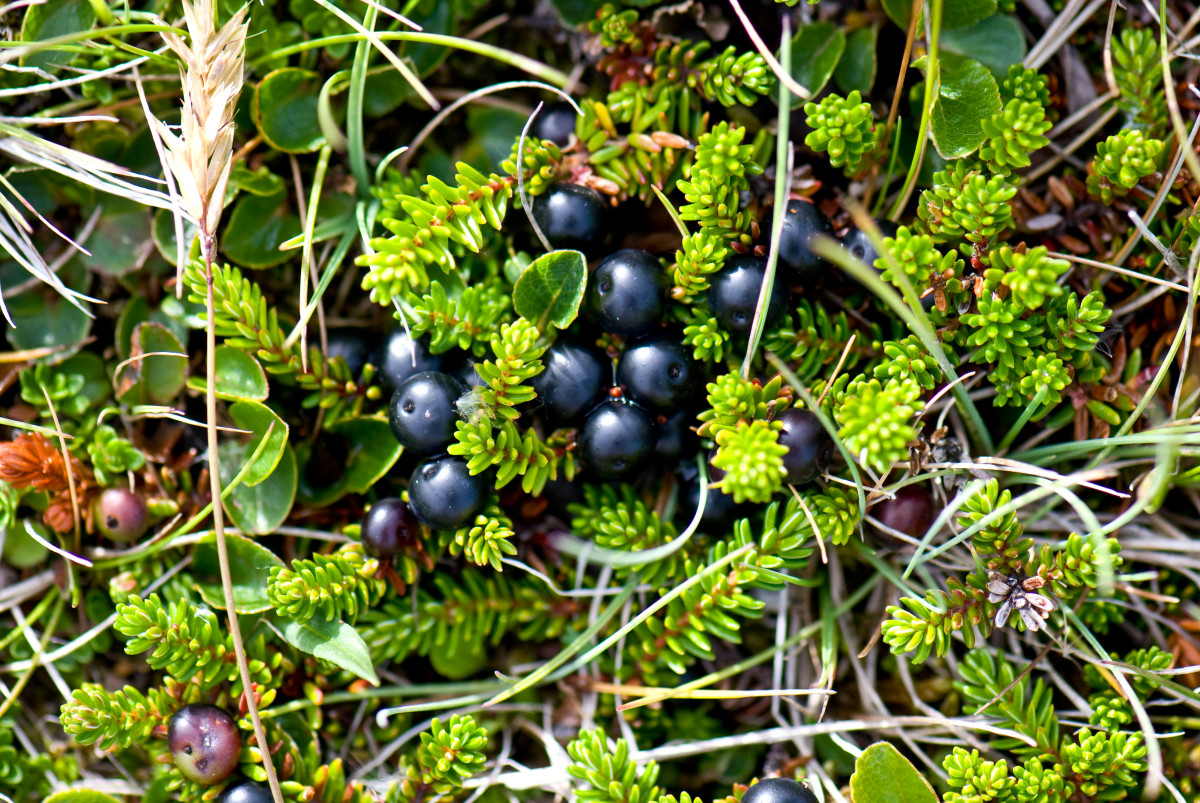



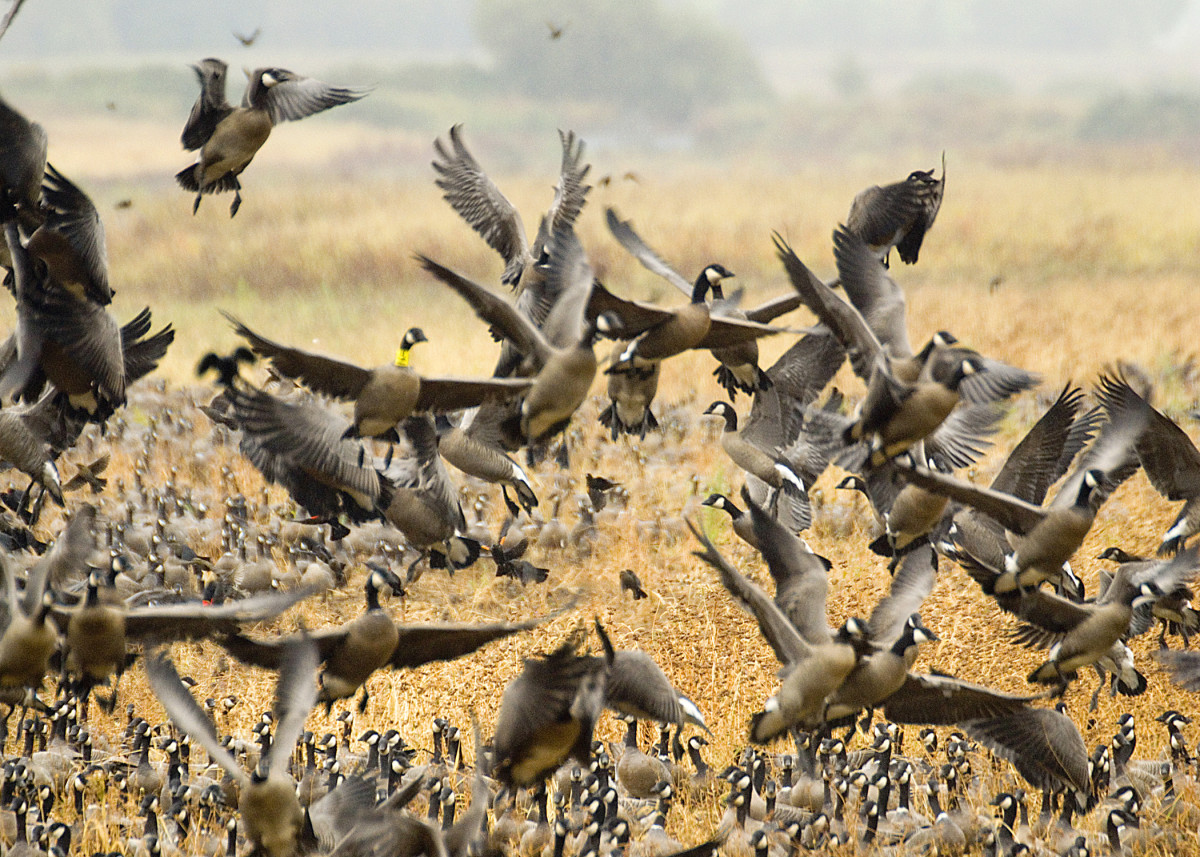


Leave a Reply